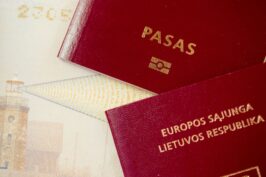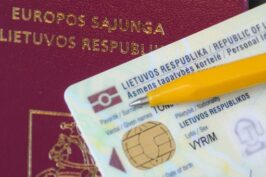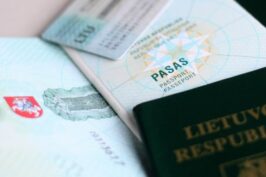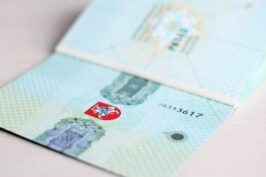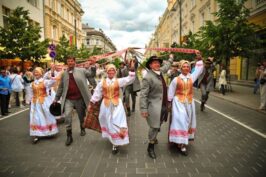Author: Jekaterina Lipeckajaj

12 Most Frequently Asked Questions About Lithuanian Citizenship Restoration by Descent
If you are looking for answers to the 12 Most Frequently Asked Questions About Lithuanian Citizenship Restoration by Descent, you are in the right place. This article on the 12 Most Frequently Asked Questions About Lithuanian Citizenship Restoration by Descent will help you better understand the process, benefits, and steps involved. This comprehensive guide covers the essential information about restoring Lithuanian citizenship by descent, including eligibility criteria, required documents, dual citizenship rules, timelines, and legal support.
Restoring Lithuanian citizenship by descent offers many benefits for people with Lithuanian roots, including access to European Union rights and opportunities. Understanding the process of Lithuanian citizenship restoration (Reinstatement of Lithuanian citizenship) is key to successfully reclaiming your citizenship.
If you’re unsure where to begin, these 12 Most Frequently Asked Questions About Lithuanian Citizenship Restoration by Descent will give you a clear starting point.
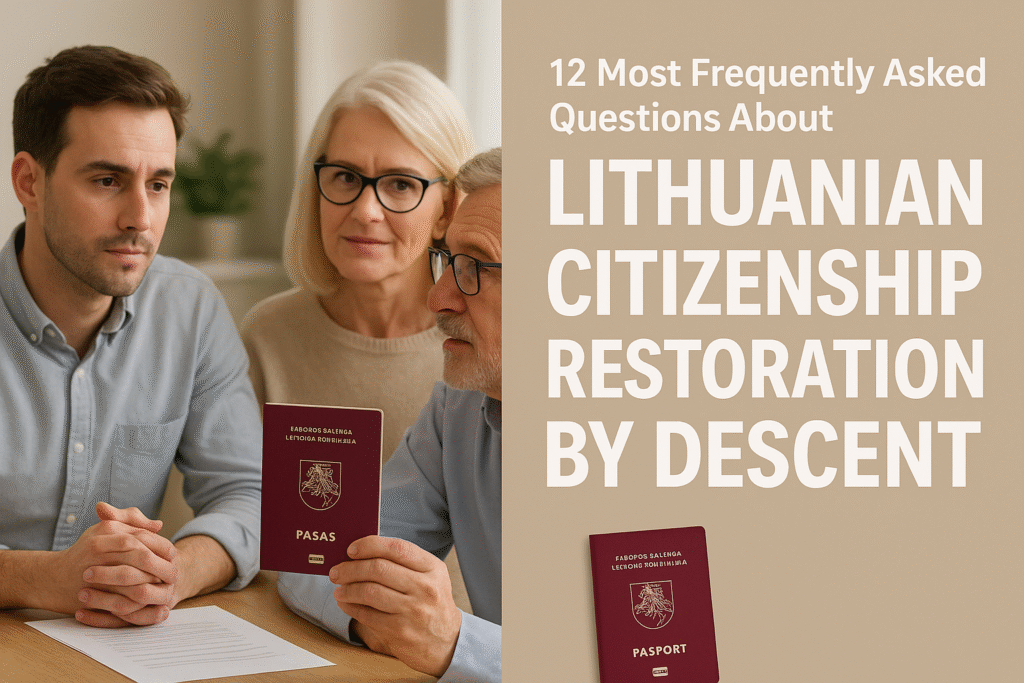
1. Who is eligible for Lithuanian citizenship restoration by descent?
You may qualify if you can prove that your parent, grandparent, or great-grandparent was a Lithuanian citizen before June 15, 1940.
To be eligible for dual citizenship, you must also prove that you or your ancestor left Lithuania before March 11, 1990, or were forcibly removed due to war, occupation, or deportation.
2. Can I apply for Lithuanian citizenship restoration if my ancestor left Lithuania due to war or persecution?
Yes. As explained in these 12 Most Frequently Asked Questions About Lithuanian Citizenship Restoration by Descent, those whose ancestors left Lithuania due to war, the Holocaust, Soviet deportation, or political persecution are often eligible.
3. What documents are needed for Lithuanian citizenship restoration by descent?
To apply for Lithuanian citizenship restoration, you will need documents proving your ancestor’s Lithuanian citizenship, such as passports, ID cards, military documents, or census records. Additionally, birth and marriage certificates are required to establish family links. For dual citizenship eligibility, documents confirming the date of departure or deportation are also necessary.
4. Do I need to speak Lithuanian or live in Lithuania to apply for citizenship restoration?
No, there are no language or residency requirements to apply for Lithuanian citizenship restoration by descent.
5. Can I keep my current citizenship when restoring Lithuanian citizenship?
In most cases, yes. Lithuania allows dual citizenship when restoring citizenship lost due to occupation-related reasons.
To qualify, you must prove that your ancestor held Lithuanian citizenship before June 15, 1940 and left Lithuania before March 11, 1990, or was deported during the Nazi or Soviet occupation.

6. How long does the Lithuanian citizenship restoration process take?
The timeframes discussed in these 12 Most Frequently Asked Questions About Lithuanian Citizenship Restoration by Descent are based on typical cases and may vary. The application process usually takes between 6 and 12 months, depending on the complexity of the case and the availability of documents.
7. What if I don’t have original Lithuanian documents?
If you lack original documents, you can request help from Lithuanian or related archives.
Our team at Migration Law Center can help you with the archival search, document analysis, and evidence collection if needed.
8. What if my ancestor’s name was changed or spelled differently?
Name changes or different spellings due to immigration or language differences (e.g., Yiddish, Hebrew, Cyrillic) are common. Submit supporting documents explaining these changes when applying for citizenship restoration.
9. Can I apply for Lithuanian citizenship restoration from abroad?
You can apply from abroad through the Lithuanian embassy or consulate in your country.
Applications must be submitted via Lithuania’s online system Migris, and original documents are later presented in person during an appointment at the Migration Department or consulate.
You can complete the process yourself or authorize a legal representative to act on your behalf.
10. Should I hire a lawyer for Lithuanian citizenship restoration?
You can apply on your own, but legal support is often helpful — especially in cases with missing records, complex family histories, or if you’re seeking dual citizenship. Lawyers experienced in Lithuanian citizenship restoration by descent can provide valuable guidance.
At Migration Law Center, we guide clients through every step, including document preparation, translation, and legal representation.
Many of the 12 Most Frequently Asked Questions About Lithuanian Citizenship Restoration by Descent involve legal complexities where professional assistance is useful.
11. How much does it cost to restore Lithuanian citizenship?
The official government fee (state fee) for submitting the citizenship restoration application is €120.
If you choose to work with legal professionals, service fees vary depending on the complexity of the case, the documents involved, and the level of support you need.
It’s important to choose experienced professionals who can handle archive research, translations, and legal submissions to ensure a smooth process.
12. Can Lithuanian citizenship be passed on to children after restoration?
Yes. If you restore Lithuanian citizenship, your children born after you officially become a Lithuanian citizen may acquire citizenship by birth. Citizenship is not automatically passed to children born before your restoration.
Following this 12 Most Frequently Asked Questions About Lithuanian Citizenship Restoration by Descent guide will help you understand the process and requirements. If you need assistance, legal experts in Lithuanian citizenship restoration can support you every step of the way.
Need help?
Contact our team at Migration Law Center for professional assistance with restoring Lithuanian citizenship. We work with clients from the US, Israel, South Africa, and beyond — making the process clear and efficient.

How to Restore Lithuanian Citizenship for Lithuanian Jews in Israel
This guide explains how to restore Lithuanian citizenship for Lithuanian Jews in Israel, covering eligibility, documents, and the application process. Restoring Lithuanian citizenship (Reinstatement Lithuanian citizenship) offers a unique opportunity for descendants of Lithuanian Jews living in Israel to reconnect with their heritage and gain access to the benefits of European Union citizenship. Many Litvak families were forced to leave Lithuania before 1990 due to war, persecution, or deportation. Understanding how to restore Lithuanian citizenship for Lithuanian Jews in Israel is the first step toward reclaiming your heritage and rights. This guide explains the legal requirements, necessary documents, and step-by-step process to help you successfully restore your Lithuanian citizenship and reclaim your family’s legacy.
Learning how to restore Lithuanian citizenship for Lithuanian Jews in Israel can give your family access to European rights and reconnect you with your historical roots.

Who Is Eligible to Restore Lithuanian Citizenship?
If you want to learn how to restore Lithuanian citizenship for Lithuanian Jews in Israel, it is important to know the eligibility criteria.
You may be eligible to restore Lithuanian citizenship if:
- You yourself were a Lithuanian citizen before June 15, 1940, or
- Your parent, grandparent, or great-grandparent was a Lithuanian citizen before that date, and
- Either you or your ancestor left Lithuania before March 11, 1990
- Or was forcibly removed from Lithuania due to political persecution, war, deportation, or the Holocaust (e.g., sent to concentration camps, Siberian exile, or other forced displacement).
This applies to many Lithuanian Jews (Litvaks) whose families fled or were deported during WWII or Soviet occupation.
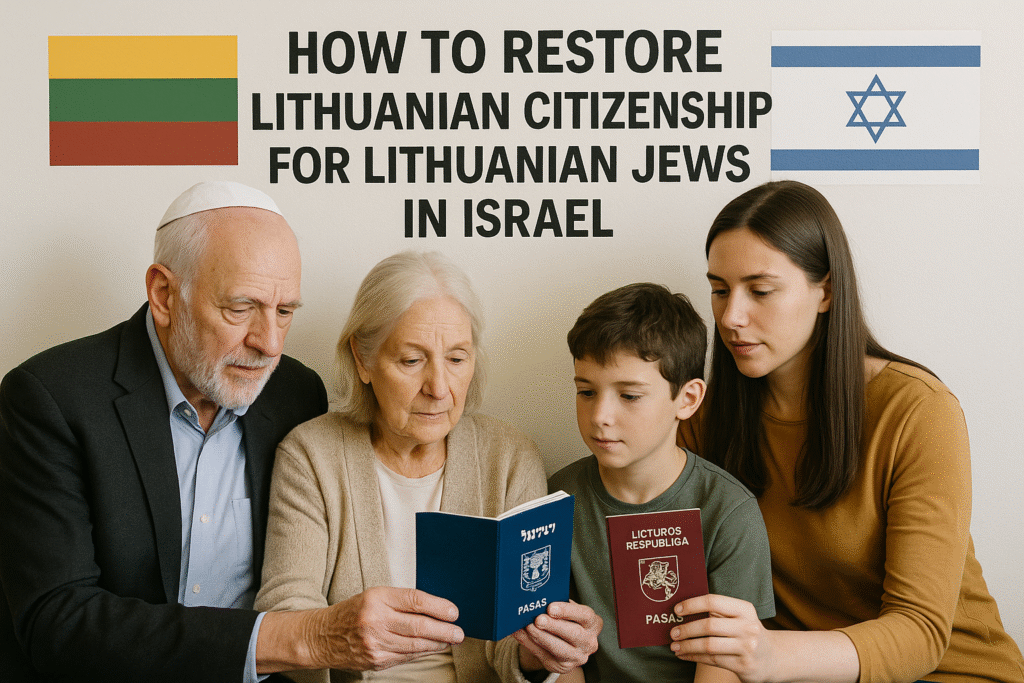
What Is “Litvak” and Why It Matters for Restoring Lithuanian Citizenship
The term Litvak refers to Jews of Lithuanian origin — a rich heritage rooted in Vilnius, Kaunas, and surrounding regions.
The Lithuanian government recognizes the historical connection of Litvaks and enables them to restore (or reinstate) Lithuanian citizenship through ancestry.
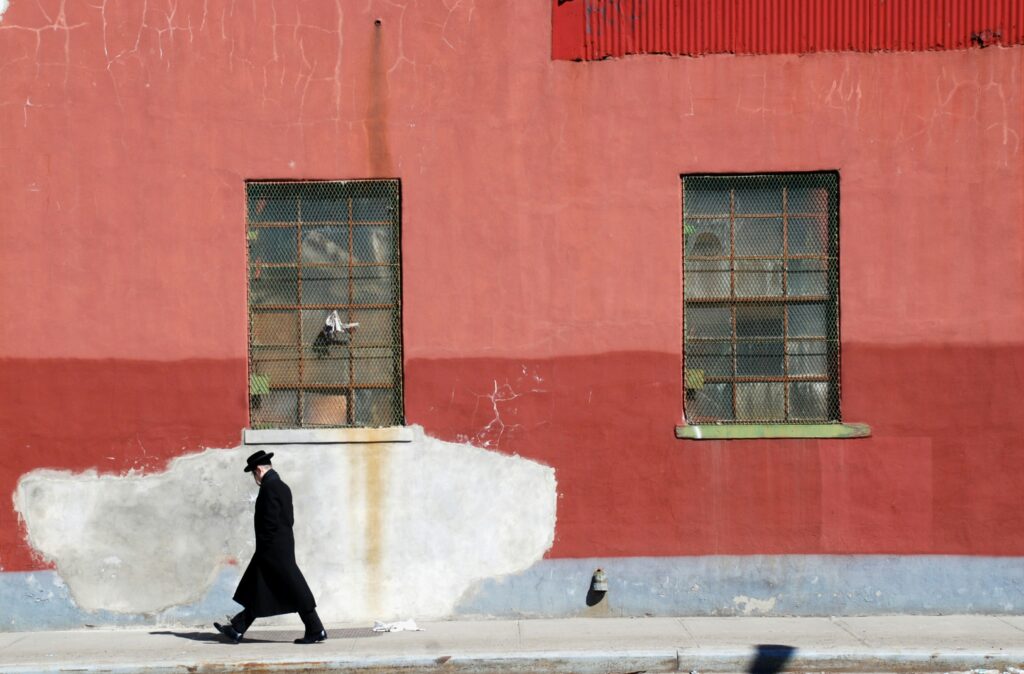
Required Documents to Restore Lithuanian Citizenship
If you’re preparing to apply, you’ll need to understand how to restore Lithuanian citizenship for Lithuanian Jews in Israel, including gathering historical documents and personal records.
To successfully restore Lithuanian citizenship, you will need:
- Proof your ancestor was a Lithuanian citizen (passport, ID, military record, census data, etc.)
- Your own birth certificate and those linking each generation
- Valid personal ID or passport
- Translations and apostille (depending on origin country)
Tip: Many Jewish records are available via Yad Vashem, JewishGen, or Lithuanian Central Archives.
Step-by-Step Guide to Restore Lithuanian Citizenship
This section details the essential steps in the process of how to restore Lithuanian citizenship for Lithuanian Jews in Israel, helping you navigate documentation and submission.
- Gather documents – both ancestral and personal
- Get certified translations and Apostille
- Submit application to the Migration Department in Lithuania or via Lithuanian Embassy in Israel
- Wait for review (usually 6–12 months)
- Receive approval and official citizenship confirmation
Some families in Israel use legal assistance to speed up or simplify the process. Services specializing in Litvak claims can help with archives and official paperwork.
Dual Citizenship – Can You Restore Lithuanian Citizenship and Keep Israeli Citizenship?
Many wonder about how to restore Lithuanian citizenship for Lithuanian Jews in Israel while keeping their Israeli citizenship, and the good news is that Dual citizenship is allowed in most cases.
Lithuanian law allows dual citizenship for those restoring their citizenship lost under occupation (i.e., due to WWII, Holocaust, or Soviet annexation).
This applies to most Litvak descendants from Israel.
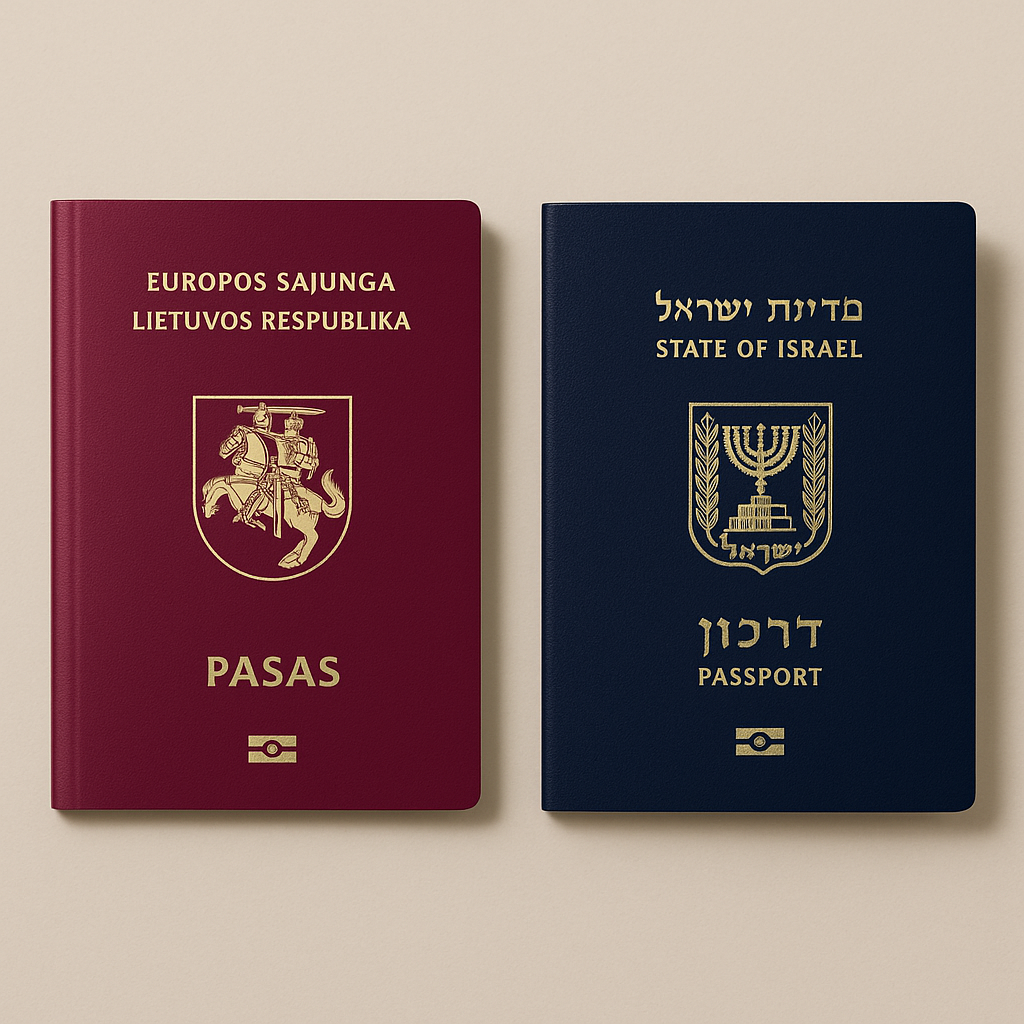
Key Conditions for Dual Lithuanian Citizenship for Lithuanian Jews in Israel
- Lithuanian Citizenship Before June 15, 1940
You or your parent, grandparent, or great-grandparent must have been a citizen of Lithuania before June 15, 1940. - Departure from Lithuania Before March 11, 1990
You or your ancestor must have left Lithuania before March 11, 1990 — the date Lithuania restored its independence. - Forced Exile or Deportation During Occupation
Alternatively, your ancestor may have been forcibly removed from Lithuania (e.g., deported to Siberia, sent to concentration camps, imprisoned, or exiled for political, ethnic, or religious reasons) during the Nazi or Soviet occupations.
Common Challenges When Restoring Lithuanian Citizenship and How to Overcome Them
- ❌ Missing documents? → Contact Lithuanian archives or use genealogical researchers
- ❌ Name variations? → Explain changes due to immigration or Hebrew/Yiddish translations
- ❌ Apostille delays (e.g., due to war or unrest)? → Include a written explanation in your application (especially relevant for current conditions in Israel)
Knowing how to restore Lithuanian citizenship for Lithuanian Jews in Israel includes understanding common challenges and preparing proper explanations for delays or missing documents.
Why It’s Worth Restoring Lithuanian Citizenship as a Litvak
Restoring Lithuanian citizenship offers more than just a legal status — it’s a powerful way to honor your roots as a Litvak and reconnect with a rich cultural heritage. For many descendants of Lithuanian Jews, citizenship is a symbolic and personal act that restores a piece of history lost through war, displacement, and persecution.
In practical terms, Lithuanian citizenship provides access to all the benefits of European Union membership, including the ability to live, work, study, and travel freely across 27 EU countries. This is especially valuable for younger generations seeking international opportunities in education or employment.
For Litvaks in Israel, restoring Lithuanian citizenship is also a legacy for future generations — an inheritance of identity, history, and global mobility. It’s both a tribute to the past and an investment in the future.
Real Stories – Litvak Families Who Restored Lithuanian Citizenship
These stories show that how to restore Lithuanian citizenship for Lithuanian Jews in Israel is not only possible, but often deeply meaningful for those reclaiming lost heritage.
Many Jewish families in Israel have successfully restored Lithuanian citizenship — both to reconnect with their roots and to access EU benefits (education, healthcare, travel freedom).
Some use the process as a way to honor their family’s memory, especially considering the Holocaust and Soviet deportations.
Need Help to Restore Lithuanian Citizenship? Legal Assistance for Israeli Applicants
At Migration Law Center, we assist individuals and families with how to restore Lithuanian citizenship for Lithuanian Jews in Israel, even in complex legal or historical situations.
If you’re unsure where to start or face document issues, consider professional help. At Migration Law Center (www.migration.lt), we specialize in restoring and reinstating Lithuanian citizenship for Litvak descendants living in Israel. Our expert team can assist you with complicated paperwork, archival research, translations, and legal procedures to make your citizenship application process smooth and successful.

Lithuanian Citizenship for Americans
Many Americans with Lithuanian roots are exploring this opportunity to reclaim their ancestral rights. This guide covers two key pathways — Reinstatement (for those with Lithuanian heritage before 1940) and Naturalization (long-term residency). Whether through ancestry or residence, we highlight criteria, timelines, and tips to simplify the process.
Understanding the process of Lithuanian citizenship for Americans helps avoid common mistakes and ensures a smoother application journey.
Reinstatement of Lithuanian Citizenship by Descen
If your family left Lithuania before March 11, 1990, and had citizenship before June 15, 1940, you may be eligible for Reinstatement of Lithuanian citizenship — even while retaining U.S. citizenship.
- Eligibility: Must prove ancestry through parents/grandparents/great-grandparents with Lithuanian citizenship prior to June 15, 1940.
- No renunciation required: Dual citizenship is allowed if your family was exiled or fled Lithuania before that 1990 date.
- Timeline: Lithuanian law specifies a decision within 6 months, though in practice expect 6–12 months.
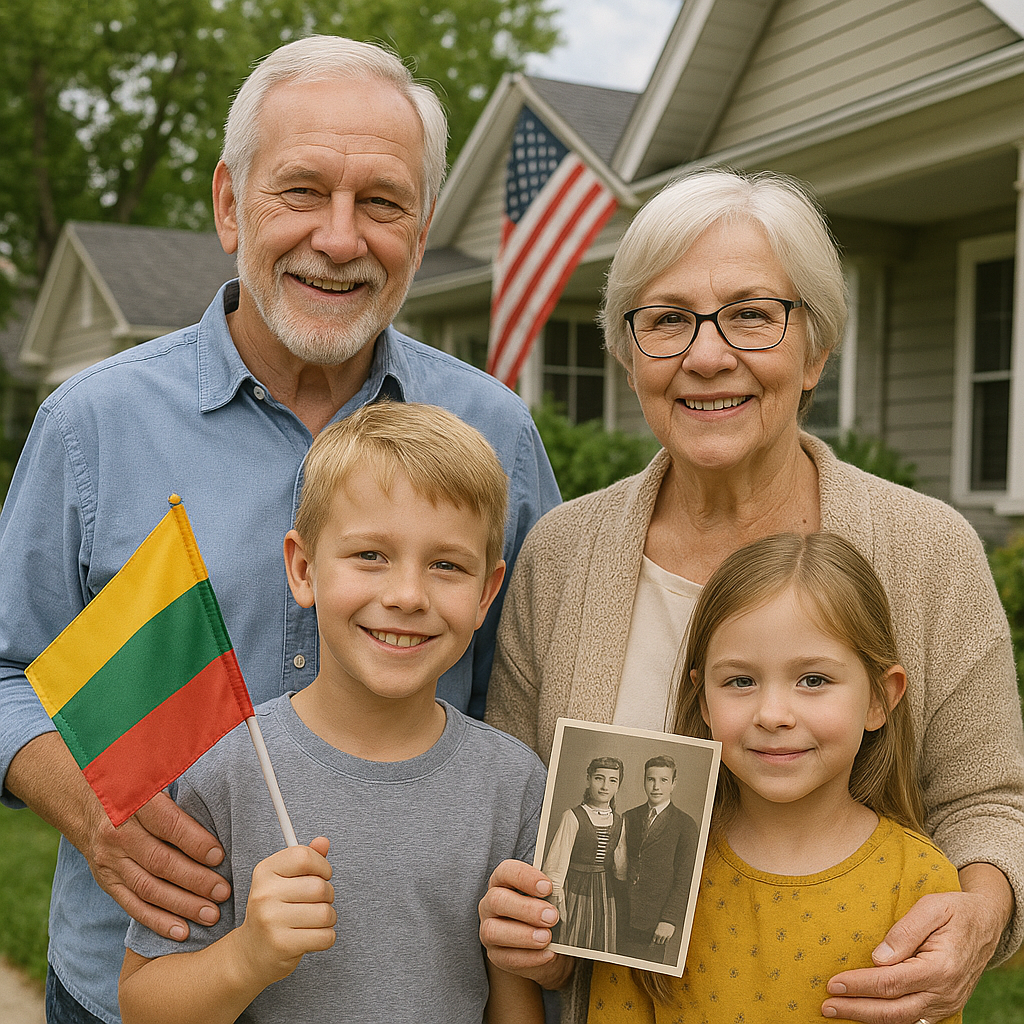
Required Documents for Reinstatement of Lithuanian Citizenship
These are the required documents for Lithuanian citizenship for Americans applying through reinstatement.
A person shall submit the following documents:
- The application for reinstatement of citizenship of Lithuania completed in Lithuanian;
- The person’s identification document;
- The document certifying that the person was a citizen of Lithuania prior to 15 June 1940 or is a descendant of a person who was a citizen of Lithuania prior to 15 June 1940;
- A document evidencing the change of name or surname where such personal data have been changed;
- The document certifying that the person is not a citizen of another state, except of cases when the person may be simultaneously a citizen of another state;
- The documents certifying that at least one of the provisions specified in the Subparagraphs 2, 3 and 4 of the Article 7 of the Law of Republic of Lithuania is satisfied, if the person is a citizen of another state.
Where to Submit Documents for Reinstatement of Lithuanian Citizenship
The documents shall be submitted to:
- a diplomatic mission or a consular institution in a foreign state – Lithuanian diplomatic missions and Consular institutions;
- the Migration department in Lithuania – Migration department.
Naturalization Based on Residence in Lithuania
For U.S. citizens who have legally and permanently lived in Lithuania for at least 10 years, a naturalization path is available:
- Residency Requirement: Must reside continuously—no single leave beyond five months per year.
- Supporting Criteria: Proof of legal income, a clean criminal record, and passing an exam in basic Lithuanian language and knowledge of the Constitution.
- Spouse Exemption: If married to a Lithuanian citizen, the required residence drops to 7 years, or even 5 years for descendants of deportees or political prisoners.
Documentation includes permanent residency proof, exam results, and statutory declarations regarding dual citizenship. The process can span up to 12 months across Migration review, Commission approval, Presidential decree, and oath-taking.
Document Requirements for Naturalization of Lithuanian Citizenship
To apply for Lithuanian citizenship through naturalization, you must submit the following documents:
- A completed application form in Lithuanian;
- Valid passport;
- Proof of permanent residence in Lithuania;
- Documents confirming lawful permanent residence in Lithuania for at least 10 years;
- Proof of legal means of subsistence;
- Certificate of passing the examination on the basics of the Lithuanian language and the Constitution of Lithuania;
- Certificate confirming the absence of criminal convictions.
Meeting these document requirements is essential to ensure a smooth naturalization process.
Where to Submit Documents for Naturalization
The documents shall be submitted to:
- the Migration department in Lithuania – Migration department.
Dual Citizenship: Can You Keep Both?

Dual Lithuanian citizenship for Americans is permitted in many reinstatement cases, especially for those descended from exiles, Holocaust survivors, or anyone whose ancestors left Lithuania before March 11, 1990.
- Descent-based reinstatement: Dual nationality is automatically allowed if your ancestry qualifies.
- Naturalization: You may need to renounce other citizenships—unless a treaty or your spouse’s status provides an exception.
- Practical explanation: The difference often lies in whether you’re regaining citizenship by heritage or applying freshly via residence and integration.
Typical Timeline Comparison
| Pathway | Estimated Timeline |
|---|---|
| Reinstatement | 6–12 months |
| Naturalization | Up to 12 months (Migration department review + Commission + Presidential decree + oath) |
Why Americans Are Reclaiming Lithuanian Citizenship?
There are many reasons why Lithuanian citizenship for Americans has become so appealing — from emotional ties to practical EU rights.
In recent years, more and more Americans of Lithuanian descent are choosing to reclaim their Lithuanian citizenship. For many, this is a way to reconnect with their family heritage, preserve cultural ties, and honor the legacy of their ancestors who emigrated from Lithuania decades ago. Beyond emotional and cultural reasons, Lithuanian citizenship also offers tangible benefits—such as the ability to live, work, and study freely across the European Union.
Benefits of Dual Lithuanian Citizenship for U.S. Citizens
For Americans, Lithuanian citizenship opens doors across Europe – this is one reason why Lithuanian citizenship for Americans continues to rise in popularity.
Dual citizenship can provide U.S. citizens with greater global mobility, access to affordable healthcare and education in the EU, and new opportunities for business and investment in Lithuania and other EU countries. It also means that your children and grandchildren may inherit the right to EU citizenship, expanding their opportunities across Europe.
How We Help You Through the Process?
Applying for Lithuanian citizenship — whether through reinstatement or dual citizenship—requires navigating legal documents, proving your ancestry, and ensuring full compliance with the law. Our experienced legal team assists clients every step of the way: from reviewing eligibility and gathering documentation, to submitting a well-prepared application to the Migration Department or Presidential Office. We offer personalized guidance to ensure a smooth, stress-free process.
Why Choose MIGRATION LAW CENTER?
- Specialized U.S.-Lithuania guidance
- Free eligibility assessment – Free Legal Assessment Form
- Comprehensive legal support from document collection through to final decision
Get Started Today
Whether you’re seeking dual citizenship or looking to reconnect with your Lithuanian roots, our team specializes in the legal process surrounding Lithuanian citizenship for Americans. We make the journey as simple and efficient as possible.
If you believe you may be eligible for Lithuanian citizenship, take the first step by contacting our legal team for a free legal assessment. We will review your case and provide clear guidance on your options.
📞 Phone: +370 685 63053
📩 Email: info@migration.lt
📝 Fill out our Free Legal Assessment Form
Let us help you navigate the process and submit a strong, well-prepared application.
Conclusion:
Whether through heritage or long-term residence, both citizenship routes are accessible to U.S. residents. With the right legal help, dual citizenship can be secured in under a year. Contact us to explore your path.

Name or Surname Change in the Lithuanian Population Register
Is it possible to change the spelling of your name or surname in the Lithuanian Population Register? Yes, it is possible if there is a valid reason and your personal data in another country—such as on your birth certificate or passport—is recorded differently than in the Lithuanian register. A common case is the desire to restore the original spelling, especially when the name or surname contains letters not found in the Lithuanian alphabet, such as “W” or “Q.”
When can you change your name or surname?
According to the Lithuanian Civil Status Acts Registration Law, changing your name or surname is allowed when:
- Your name or surname is recorded differently in documents of other countries;
- You are registered in the Lithuanian Population Register and are a Lithuanian citizen;
- Your name or surname was changed by a foreign authority and is supported by official documents;
- You want to restore the original historical or ethnic form;
- There is a spelling mistake in your name or surname;
- You want to unify the spelling with foreign documents for practical reasons (e.g., travel, international registration);
- Your name or surname is unusual or causes inconvenience, and you want a simpler or more international version.
Common case: Using the letter “W”
Persons with Dual citizenship or born and raised abroad often apply to change the spelling of their name or surname when it was adapted in the Lithuanian register according to Lithuanian language rules (e.g., changing “Warren” to “Varren”). If your birth certificate or passport shows the spelling with “W,” this spelling can be restored in the Lithuanian register.
Previously, the letter “W” was not allowed in official Lithuanian documents because it is not part of the Lithuanian alphabet. However, since 2021, legal amendments permit the use of certain foreign letters (e.g., W, Q, X) if justified by the person’s origin or foreign documents. This change allows restoring the original form of names and surnames in the Lithuanian register more accurately.
Required documents
To change the spelling of your name or surname, you will need to submit:
- An application for name/surname change;
- An identity document (Lithuanian passport or ID card);
- Foreign birth certificate (legalized or with Apostille);
- Foreign passport or other documents showing the desired spelling;
- Translations into Lithuanian (if documents are in another language);
- If your name or surname was officially changed abroad – a document confirming this change (e.g., court decision or civil status certificate).
Where to apply?
- Civil Registry Office (Civilinės metrikacijos skyrius);
- Migration Department (in some cases);
- Lithuanian embassy or consulate (if residing abroad).
- Online through the relevant electronic services, if available.
How long does the process take?
The processing time for a name or surname change depends on the specific situation, completeness of documents, and workload of the institutions. Typically, it takes from 1 to 3 months. If documents from abroad need legalization or translation, the process may take longer. In complex cases or if additional clarifications are required, it may take up to 6 months.
How much does it cost?
Official state fees for name or surname changes generally range from 10 to 50 euros, depending on the case. Additionally, costs may occur for translations or legal representation. Our team will provide you with a detailed fee quote tailored to your situation.
Our assistance
The Migration Law Center team helps clients worldwide with name or surname changes in the Lithuanian Population Register. We can assist you with:
- Consulting on the possibility to change your name/surname;
- Preparing applications and gathering necessary documents;
- Representing you before Lithuanian authorities;
- Ensuring a smooth process compliant with legal requirements;
- Providing official translations and document legalization if needed;
- Offering personalized support based on your specific situation and foreign country requirements.
Contact us
If you want to change your name or surname, please contact us by email at info@migration.lt or via the contact form on our website. We will reply and provide all necessary information and a quote.

